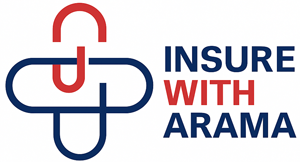Medicare doesn’t have to be confusing. Use this simple month-by-month checklist to enroll on time, avoid penalties, and choose coverage that fits your doctors, prescriptions, travel, and budget.
6–9 Months Before Your 65th Birthday: Get Your Bearings
-
Learn the basics:
-
Original Medicare (Parts A & B): Federal coverage for hospital and medical services.
-
Part D: Stand-alone drug coverage if you stay on Original Medicare.
-
Medigap (Supplement): Optional policy that helps pay deductibles/coinsurance; no networks.
-
Medicare Advantage (Part C): Private plan alternative bundling A, B, usually D, plus extras (dental/vision/hearing/OTC), but with networks.
-
-
Make a priorities list: doctors you want to keep, routine meds, travel patterns, budget comfort, dental/vision needs.
-
Still working with employer coverage? Ask HR for a Creditable Coverage letter for your drug plan and confirm whether you must enroll in Part B at 65.
3–4 Months Before: Prep Your Documents & Deadlines
-
Your Initial Enrollment Period (IEP) is a 7-month window: the 3 months before, the month of, and 3 months after your 65th birthday.
-
If you’re taking Social Security, you’re typically auto-enrolled in Parts A & B. Otherwise, plan to enroll at SSA.gov.
-
Collect your Rx list: exact drug names, dosages, frequency, preferred pharmacies.
2 Months Before: Decide Your Path
Choose one of these routes:
Route A: Original Medicare + (Optional) Medigap + Part D
-
Pros: Nationwide access, no networks, predictable costs with the right Medigap plan.
-
Cons: Higher monthly premium than many Advantage plans; dental/vision usually separate.
Route B: Medicare Advantage (Part C)
-
Pros: One ID card, often includes Part D and extras like dental/vision/OTC/gym.
-
Cons: Networks, prior authorizations, and an out-of-pocket maximum to consider.
Tip: If you travel frequently or split time between states, Original Medicare + Medigap often provides fewer network headaches. If you want bundled extras and don’t mind networks, Advantage can be compelling.
1 Month Before: Enroll the Smart Way
-
Part A & B: Enroll at SSA.gov if not auto-enrolled.
-
Then pick ONE of the following:
-
Medigap + Part D: Enroll in Medigap during your 6-month Medigap Open Enrollment (starts when you’re 65+ and Part B is active) for guaranteed acceptance in most states. Choose a Part D plan that covers your meds at your preferred pharmacy.
-
Medicare Advantage (MAPD): Confirm your doctors/hospitals are in-network and your medications are on the formulary at acceptable tiers.
-
-
Run a total cost view: premium + deductible + typical copays + worst-case out-of-pocket.
Your Birthday Month: Double-Check & Activate
-
ID cards & effective dates: Make sure your coverage begins the 1st of the month you turn 65 (or the 1st of the next month if you enroll after your birthday month).
-
Pharmacy test: Refill one prescription to confirm pricing works as expected.
-
Set calendar reminders for preventive visits (wellness exam, labs, screenings).
1–3 Months After: Fine-Tune & Use Your Benefits
-
Welcome to Medicare visit: Schedule it—no cost with Original Medicare; Advantage plans typically cover a similar visit.
-
Dental/vision/hearing extras: If on Advantage, use them early so you don’t leave value on the table.
-
Keep EOBs (Explanation of Benefits): They help you monitor spending and spot billing errors.
Special Cases (Quick Answers)
-
Still working at 65 with a large employer plan? You may delay Part B and Part D without penalty if the coverage is creditable. Keep documentation.
-
Retiring mid-year? You’ll get a Special Enrollment Period to take Part B and enroll in Medigap/Part D or Advantage without waiting for AEP.
-
High-income earners: Be aware of IRMAA surcharges for Parts B and D; if your income has dropped, you can appeal.
Frequently Asked Questions
Will I pay a penalty if I delay Part B?
Not if you have creditable employer coverage and enroll during your Special Enrollment Period when that coverage ends.
Which is cheaper: Medigap or Advantage?
Advantage often has lower premiums but higher potential out-of-pocket with networks and authorizations. Medigap has higher premiums but more predictable costs and broad access. The “cheapest” depends on your health usage and risk tolerance.
Do I need Part D if I don’t take prescriptions?
You don’t have to, but late enrollment can trigger a lifetime penalty. Many choose an inexpensive Part D plan to avoid this.

